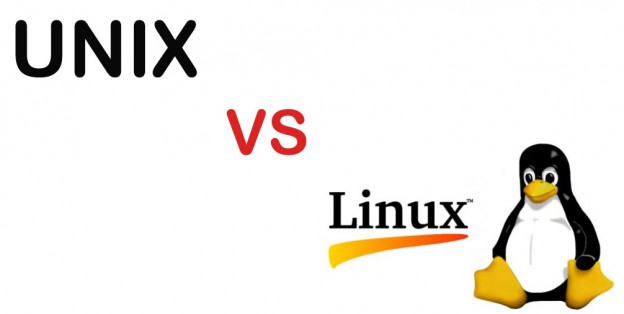Linux server virtualization technology helps in mitigating business risk while ensuring a resilient platform for its subscribers. It goes without saying that today every business be it a corporate giant or startup is in a quest to cut back capital and operating expenses, leverage greater control, and gain maximum scalability for its core enterprise applications. Therefore, investing in a highly-manageable Linux infrastructure can help IT to respond to changing business requirements while improving productivity and reducing the total cost of ownership. On top of it, this versatile and high-performance setup delivers ongoing economic value for organizations of all sizes.
Recasting the virtual environment for your intensive workloads are the major aspects that every organization look forward to gain the momentum and cut down all the prequels linked with UNIX infrastructure.
Why enterprises are looking forward to Migrate?
There are numerous reasons why enterprises choose to migrate from bastion of UNIX infrastructure. Many chief executive leaders suggest the following reasons:
- Maintenance and support of existing hardware and software cost too much
- Lack of flexibility and agility
- Less control over the deployed environment
- Inability to respond to dynamic business needs
Ongoing technical advances in enterprise-class servers and solutions have made migration procedure entirely smooth and risk-free. To impart a greater control of LINUX technology over the conventional UNIX-based platform, it is imperative to know the proven steps that will assist you in successful migration process.
Initiate: Deploy a Test Lab or Pilot Project
In adopting Linux to power your intensive servers and applications loaded on them, enterprises typically choose one of the two key ways. Many organizations start the migration procedure with deploying a test lab, while a few companies initiate with Pilot project. The selection process between the two key approaches is industry-specific.
Deploy a Test Lab:
In this process, a small number of application frameworks are demonstrated and evaluated on LINUX platform as a standalone unit, separated from the entire application running in the production environments.
Pilot Project- Some companies choose a single lower-risk production environment to re-host in the form of pilot project.
Evaluate: Software compatibility
Before proceeding with the migration process, enterprises first need to check the compatibility of the existing software stack with Linux infrastructure. With up surging growth in IT ecosphere, there are a number of third-party software tools available for hardware enablement. For example- Drivers are available for failover SAN connectivity, middleware, monitoring, storage enablement such as volume managers, utilities, databases and many more.
Once all the software meets the compatibility criteria, you can proceed with the migration procedure further.
Note: You are required to check Linux versions of your software in the first phase of migration. For this, conduct your own qualification tests without relying on IT vendor’s compatibility practices.
Execute: Port your onsite server applications
Major organizations will have on-premise software that supports to power their mission-critical business applications. With good quality of source code, porting process will be smoothly performed. However, if the coding level is found quite unfamiliar, then you need to re-host UNIX software as per Linux compatibility so that it runs directly on Linux. Such approach could accelerate the process of migration for custom on-premise developed applications on traditional UNIX architecture.
Controlling: Train your IT professionals
In order to follow the success roadmap, it is inevitable that your IT staff should acquaint themselves with all the respective algorithms and strategies beforehand for effective commence of the migration process. It goes without saying that investment in knowledge is never a waste. Thus, your UNIX know how will certainly act as an upper hand in making Red Hat Enterprise Linux adoption swifter. However, there are some specific things still left to learn about x86 architecture. For the same, there are an impressive number of good tutorials and videos available on YouTube that can give your IT staff a better insight.
Ensuring Alignment with Business Standards
It is true that one size never fits all and the same can be translated for businesses functional across various sectors. Simply put, every business has specific system needs, and standards that support their apps. Some of the key pointers that IT professionals should bear in their mind– they should prepare a standard operating system framework that effectively falls in alignment with the business standards. There is a host of platforms that helps in codifying organizational needs in a decipherable and flexible manner.
Deployment of Pilot Project
Ostensibly, predicting about the timing and planning of the pilot deployment is quite an intricate process as it completely depends on the size and complexity of the different sites. However, abiding by some of the guidelines you can reap best out of your pilot project.
Closed-loop Approach Bestows Best Outcome
Closed-loop approach gives a boost to decision-making by capturing the learning at every step. It ensures that all the deployed systems are working fine. On top of that, it gives quick insight into deployed systems.
Adopting RHEL platform can be a money-spinning journey for business leaders as it not only reduces upfront costs allied to hardware, software, and product licensing, but also supports faster time to market. Linux servers hosting provide all the capabilities necessary for managing simple to complex application architecture with more granular control plus growth headroom when compared to RSIC systems. Aforementioned steps can help organizations to swiftly carry out the migration process.
Still pondering? Connect to our Linux technical support team to resolve all your related queries in no time. You can either call us toll free at…., chat with our experts, or send us your queries through emails at….






 Live Chat
Live Chat


